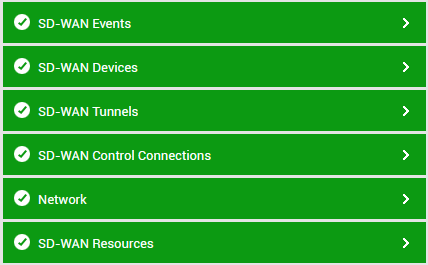Monitoring Cisco SD-WAN
eG Enterprise offers a special-purpose monitoring model for the Cisco SD-WAN appliance to monitor the components of the Cisco SD-WAN, resource utilization of the components, status and traffic flowing through the tunnels. Abnormal traffic flows can be instantly detected using this monitored model. This way, administrators are proactively alerted to issues so that they can initiate remedial actions well before users complain.
By periodically running the REST API commands, eG agents collect various metrics of interest from the target Cisco SD-WAN appliance. Figure 1 depicts the layer model of a Cisco SD-WAN.

Figure 1 : Layer model for Cisco SD-WAN
Every layer in the Figure 1 is mapped to various tests to determine metrics related to the performance of the target Cisco SD-WAN appliance. Using the metrics reported by the tests, administrators can find accurate answers for the following queries:
-
Is the CPU space consumed by the user/system processes of each component is high?
-
Does the CPU for each component was idle for a long time?
-
Is the disk allocated to each component is enabled?
-
Is the disk space utilized by each component is high?
-
How well the memory resources are used by each component?
-
Is the admin and operational status of each network interface is down?
-
Does each network interface took maximum uptime since its last reboot?
-
How well traffic is handled by each network interface?
-
Are there too many errors encountered during data transmission?
-
Is the current state of each control connection is down?
-
Does each control connection took maximum uptime since its last reboot?
-
How well traffic is handled by each tunnel and which tunnel is handling maximum amount of data transmission?
-
Are the components of the target Cisco SD-WAN appliance reachable?
-
Is the current status of each component is abnormal?
-
Does each component took maximum uptime since its last reboot?
-
Are there frequent crashes observed for each component?
